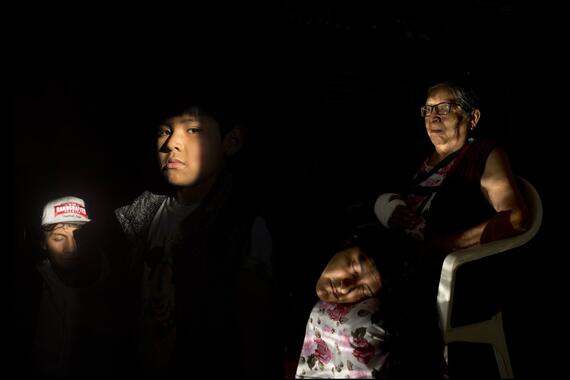Magnum Foundation Photographer Spotlight: Victor Zea Diaz and the Yanacancha-Huaquis Cultural Landscape

In 2022, World Monuments Fund (WMF) and Magnum Foundation announced that they were partnering to support local photographers around the world in documenting the sites on the 2022 World Monuments Watch and the communities around them.
Victor Zea Diaz, one of this year’s 12 grantees, is a Cusco-based documentary photographer who plans to create portraits of the families in the villages of the Yanacancha-Huaquis Cultural Landscape, Peru, where residents are reviving ancient water management infrastructure and techniques to foster climate resilience. We spoke to Victor as part of a series of interviews with the Magnum grantees. An excerpt of our conversation, edited for clarity and length, can be found here:
WMF: Your process involves the use of a photographic technique called solarigraphy, which captures the journey of the sun across the sky. Can you talk about the significance of this technique for the project at Yanacancha-Huaquis?
Victor Zea Diaz (VZ): Andean ancient temples and archeological sites were very connected with the sun, so for me it's an interesting way to portray the landscape of Yanacancha because it’s a site from our ancestors, and they made it knowing the astronomy.
Not only is it beautiful; solarigraphy is also an information database about the weather. You can see when it’s cloudy—it’s a “print” of the water [in the atmosphere]. We will do workshops for park rangers so they can use this as a database for the climate.
WMF: To tell the story of the Yanacancha-Huaquis Cultural Landscape, you have proposed doing a series of family portraits. Can you talk about this genre choice?
VZ: I want to use family portraits to talk about the landscape. This project is about how ancient knowledge is transmitted. You can feel the transmission with this kind of image: portraits of younger generations, of older generations.
WMF: Much of your past work has focused on street culture in urban communities, such as documenting the hip hop scene in Cusco. Do you view the Yanacancha-Huaquis project as a departure from this previous work, or do you see a through-line connecting it to your past investigations?
VZ: I'm very interested in how people return to their roots. I live this in my life: my father speaks Quechua, and I don’t, but I am trying to connect with tools like photography or hip hop. My work focuses on indigenous-language rap in Peru. For me it’s about connection with your roots—through dancing, through family.
To read more interviews with the Magnum Fellows, click here.
Learn More
World Monuments Fund safeguards cultural heritage around the globe, ensuring our treasured places are preserved for present and future generations.
Sign up for our newsletter to receive regular updates on our projects, stories from the field, upcoming events, and more!
